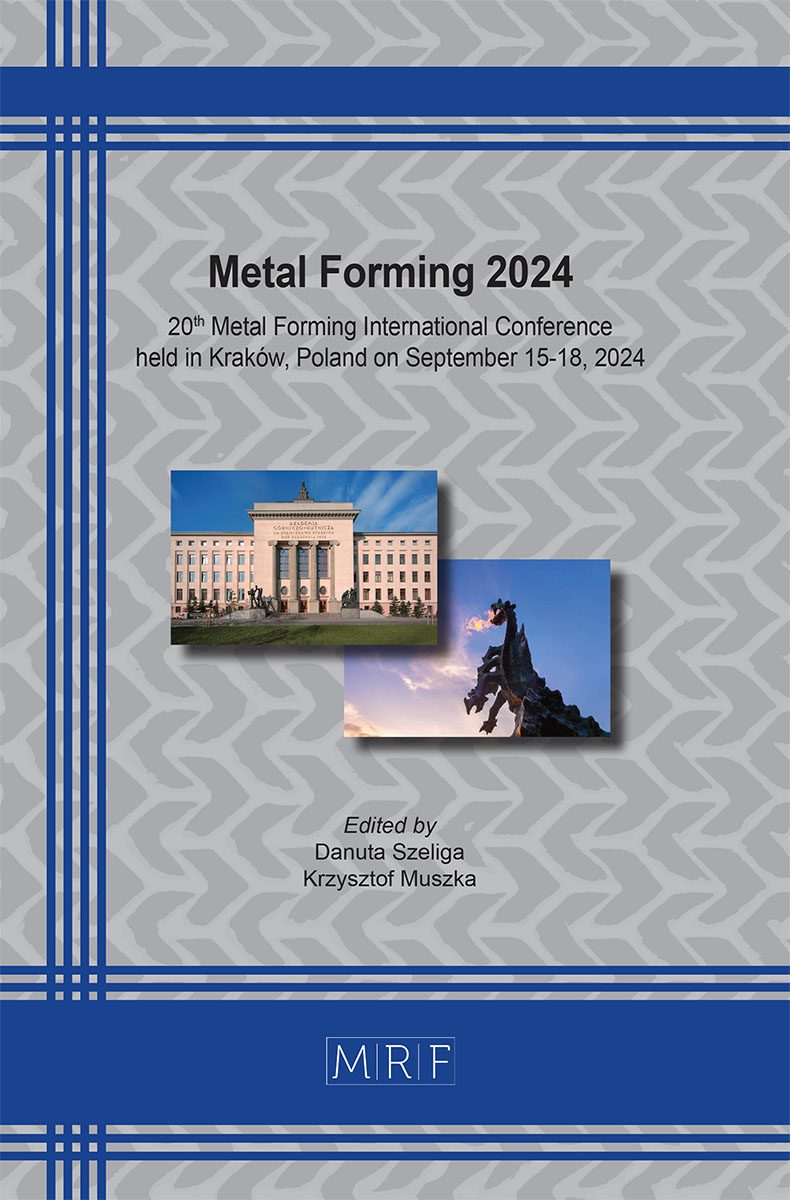–
A customized design tool incorporating web and client functions for new mechanical presses
NI Jun, SUN Yu, WANG Yu, WU Kai
download PDFAbstract. To improve the design efficiency and consistency of many new mechanical presses developed by a few engineers, an application with two tabs was proposed to incorporate a web browser and a client window, respectively, for the press modification and the new press design. The press modification is based on the standardized press data in server while the new press design adopts the functions of Computer-Aided Design (CAD) and Word processing tools in local computers. For the press modification: (1) a case retrieval function was developed to find similar features of standardized press information that was then adapted to meet the new custom order; (2) some structural parameters and component selections were adjusted and checked by the calculation algorithms and material properties; (3) within the browser tab, design document was eventually reported. For the new press design: (1) besides the BOM templates, two dimensional (2D) sketch templates were summarized for non-standard parts or assemblies including the machine frame, crank, links, slider, work-table, etc.; (2) the slider movement design and dimensional allocation of press components were performed according to a series of interactive dialogs, answers and views with regard to the custom order; (3) the dot net framework was adopted to integrate Solidworks, Auto CAD and Word functions to generate parts, assemblies, drawings and the Bill Of Materials (BOM) from the 2D sketch and BOM templates using the dimensional allocations and the design results. Examples validated the feasibility of the proposed tool.
Keywords
Mechanical Press, CAD, Knowledge-Guided, Multi-Link System, Structural Consistency
Published online 9/15/2024, 11 pages
Copyright © 2024 by the author(s)
Published under license by Materials Research Forum LLC., Millersville PA, USA
Citation: NI Jun, SUN Yu, WANG Yu, WU Kai, A customized design tool incorporating web and client functions for new mechanical presses, Materials Research Proceedings, Vol. 44, pp 558-568, 2024
DOI: https://doi.org/10.21741/9781644903254-60
The article was published as article 60 of the book Metal Forming 2024
![]() Content from this work may be used under the terms of the Creative Commons Attribution 3.0 license. Any further distribution of this work must maintain attribution to the author(s) and the title of the work, journal citation and DOI.
Content from this work may be used under the terms of the Creative Commons Attribution 3.0 license. Any further distribution of this work must maintain attribution to the author(s) and the title of the work, journal citation and DOI.
References
[1] Q.Y. Research Centre, Press machine report 2024, global revenue, key companies market share & rank, Abstract, 2023, Information on https://www.qyresearch.com.cn/reports/press- machine-p3072233.html
[2] W.P. Neumann, S. Winkelhaus, E.H. Grosse, C.H. Glock, Industry 4.0 and the human factor – A systems framework and analysis methodology for successful development, Int. J. Prod. Econ. 233 (2021) 107992. https://doi.org/10.1016/j.ijpe.2020.107992
[3] S. Herbst, A. Hoffmann, Product Lifecycle Management (PLM) mit Siemens Teamcenter, Carl Hanser Verlag GmbH & Co. KG Press, Göttingen, 2018. https://doi.org/10.3139/ 9783446446496.fm
[4] R. Lopez De Mantaras, D. Mcsherry, D. Bridge, D. Leake, B. Smyth, S. Craw, B. Faltings, M.L. Maher, M.T. Cox, K. Forbus, M. Keane, A. Aamodt, I. Watson, Retrieval, reuse, revision and retention in case-based reasoning, Knowl. Eng. Rev. 20 (2005) 215–240. https://doi.org/10.1017/S0269888906000646
[5] H. Munoz-Avila, M.T. Cox, Case-Based Plan Adaptation: An Analysis and Review, IEEE Intell. Syst. 23 (2008) 75–81. https://doi.org/10.1109/MIS.2008.59
[6] Y. Huo, J. Liu, J. Xiong, W. Xiao, J. Zhao, Machine learning and CBR integrated mechanical product design approach, Adv. Eng. Inform. 52 (2022) 101611. https://doi.org/10.1016/j.aei. 2022.101611
[7] H. Liu, S. Dhawan, M. Shen, M. Shen, K. Chen, V. Wu, L. Wang, Industry 4.0 in metal forming industry towards automotive applications: a review, Int. J. Automot. Mech. Eng. 1 (2022) 2-12. https://doi.org/10.53941/ijamm0101002
[8] V.A. Ciubotariu, C. Grigoras, C.M. Radu, C.N. Tampu, V. Zichil, The opportunity of using cloud-based computing in numerical simulations on structural analysis – case study, J. Eng. Stud. Res. 28 (2022) 38-42. https://doi.org/10.29081/jesr.v28i1.004
[9] M. Shubhit, K. Vineet, G. Pradeep, An analogy between conventional and unorthodox cad methods, Mater. Today: Proc. 43 (2021) 2098-2104. https://doi.org/10.1016/j.matpr.2020.11.889
[10] F. Liu, Fast industrial product design method and its application based on 3D CAD system, Comput. Aided Des. Appl. 18 (2021) 118-128. https://doi.org/10.14733/cadaps.2021. S3.118-128
[11] N. Geren, O. Oktay Akçalı, E. Unver, J. Allport, Automated sizing of automotive steering ball joints in parametric CAD environment using expert knowledge and feature-based computer-assisted 3D modelling, Adv. Eng. Inform. 52 (2022) 101630. https://doi.org/10.1016/j.aei.2022.101630
[12] Aranburu, J.D. Camba, D. Justel, M. Contero, An improved explicit reference modeling methodology for parametric design. Comput. Aided Des. 161 (2023) 103541. https://doi.org/10.1016/ j.cad.2023.103541
[13] T.L. Saaty, J.S. Shang, An innovative orders-of-magnitude approach to AHP-based mutli-criteria decision making: prioritizing divergent intangible humane acts, Eur. J. Oper. Res. 214 (2011) 703-715. https://doi.org/10.1016/j.ejor.2011.05.019
[14] J. Zhao, J. Tian, F. Meng, M. Zhang, Q. Wu, Safety assessment method for storage tank farm based on the combination of structure entropy weight method and cloud model, J. Loss Prev. Process Ind. 75 (2022) 104709. https://doi.org/10.1016/j.jlp.2021.104709












